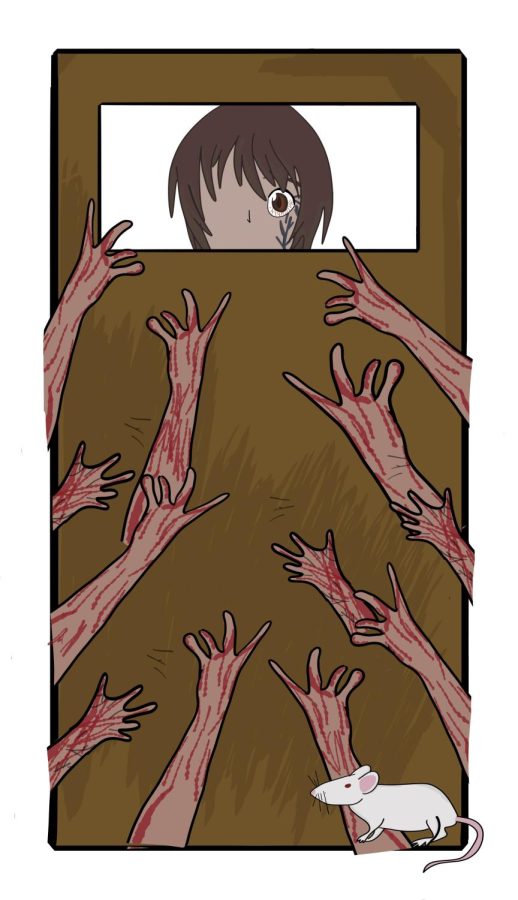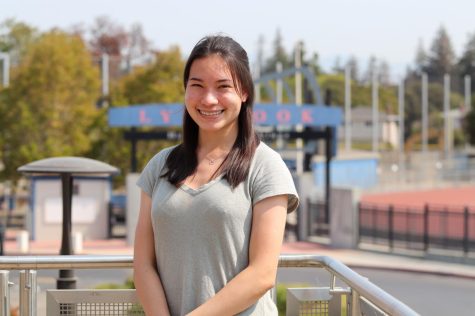“All Of Us Are Dead” ties zombie outbreaks to political endemics
Graphic illustration by Lina Mezerreg
“All Of Us Are Dead” offers a fresh perspective into the chaos of modern pandemics as it explores love, sacrifice and political flaws at an epicenter of the walking dead.
April 5, 2022
More than a stereotypical zombie horror show, South Korean drama “All Of Us Are Dead” offers a fresh perspective into the chaos of modern pandemics as it explores love, sacrifice and political flaws at an epicenter of walking dead.
The show follows a group of students in Hyosan, South Korea as they fight to stay alive after a bioengineering experiment backfires, creating a horrific zombie virus that transforms infected humans into bloodthirsty killing machines. Scenes cut between Hyosan High School, government offices and the city, all of which are rapidly transformed into bloodbaths of panic, hysteria and rotting flesh within hours.
Avoiding apocalyptic stereotypes, the show follows the fate of the school’s few survivors in a grounded and authentic manner. Even viewers inexperienced with crawling through heating pipes and impaling zombies with music stands can relate to the students’ adolescent anxieties. Class president Nam-ra has lived her entire life for academic validation, yet her peers only respect her leadership in life or death situations. Cheong-san and On-jo struggle with unrequited love and vulnerability, and even the group’s most selfish member, Na-yeon, evokes pity in her craving for social acceptance. By focusing on character development, the show juxtaposes mindless zombie cannibalism with the raw, emotional turmoil of being human.
However, plotlines are not without fault; the main characters are often kept alive by convenient plot armor, and displays of physical strength in climatic scenes despite extreme dehydration are unrealistic. Characters staying put to watch the last sparks of life slip away from infected victims instead of evacuating immediately is also frustrating, although this conveys the torment that they experience as their loved ones turn into monsters.
Beyond character development and enduring suspense, “All Of Us Are Dead” employs political satire to liken the zombie outbreak to mass hysteria in real life. In the show, government officials and higher-ups fail to rescue the desperate students, not even attempting to conduct a search for survivors at infected schools. Only one bureaucrat futilely protests that their first priority is to save the children, as they hold the future of society.
Foreign nations’ response to the crisis, which includes closing borders to Hyosan refugees and censoring news coverage, also parallels the inherent selfishness of humanity despite the sacrifice and heroism displayed by the trapped students. Hate, fear and xenophobia morph into a morbid virus in itself. The show explicitly mentions COVID-19 as well, emphasizing the spread of misinformation and sensationalism of the Hyosan crisis to imply that the population has not learnt from its previous mistakes in handling the pandemic.
Inevitably, the show raises questions about human nature and the parameters of bioethics. The unintentional creation of the virus was a desperate act of love that ended up doing more harm than good, and the portrayal of antagonist Gwi-nam — who ends up turning against his fellow survivors to feed his own selfish, twisted ego — suggests that humans may have dormant monstrous tendencies waiting to be ignited.
While at times unrealistic, “All Of Us Are Dead” still keeps viewers entranced by the rapid progression of the zombie outbreak in Hyosan and the maturing of its sole survivors as they are picked off one by one. Not only do viewers experience the characters’ terror and moral crises secondhand, but they are also probed to question the pressing ethical dilemmas shared by our own society.




































































